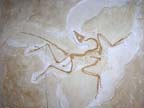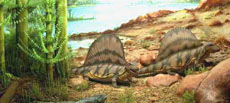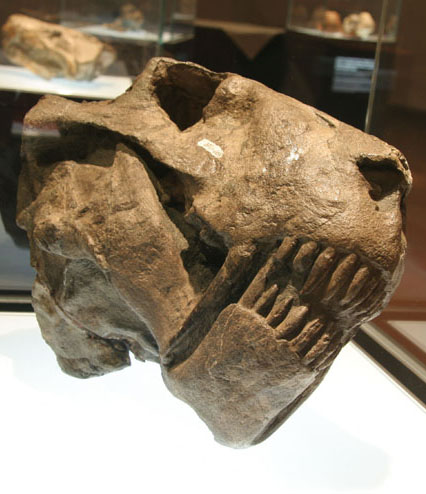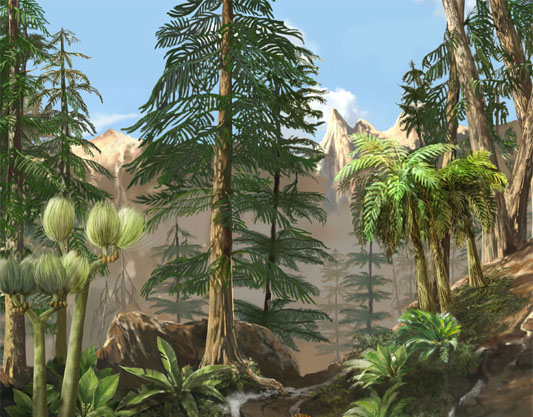 |
 |
 |
 |
 |
Produced
by the Population Genetics and Evolution class, Furman University |
||||
 |
 |
 |
 |
 |
Produced
by the Population Genetics and Evolution class, Furman University |
||||
 |
The
Permian |
 |
||
 |
The Permian Period is one of the most facinating in Earth history. The great southern continent of Gondwana connected with Laurasia, forming the single supercontinent of Pangaea. Amphibian temnospondyl (like Eryops) and lepospondyl lineages were abundant, and modern amphibian lineages like Gerobatrachus were evolving, too. But the fusion of land masses created drier conditions that ultimately favored the early amniote radiations. The synapsid lineages dominated first; led by pelycosaurs like Dimetrodon in the early to mid Permian, followed by the therapsid radiations of the mid-to-late Permian. The theraspids include the gorgonopsians, the dinocephalians like Titanophoneus and Moschops, and early cynodonts that would radiate in the Triassic and give rise to true mammals. The other amniote clades, the anapsids and diapsids, also diverged in the Permian. The pareiasuars were huge, bulky, anapsid herbivores preyed upon by synapsid predators. Smaller diapsids, like the first archosaur, Protorosaurus, also evolved. The archosaurs, which include the dinosaurs, crocodylians, and birds, would replace the synapsids and dominate the Mesozoic. Dry condtions also favored seed-plants like Glossopteris over more primitive lycopods. At the end of the Permian, the Earth experienced the greatest mass extinction event in history, when 90% of all species may have perished. Paleontologists recognize this mass extinction as the end of the Paleozoic Era. Surviving lineages would radiate and fill the ecological vacuum - initiating the Triassic Period of the Mesozoic Era. |
 |
||
| Above: a Gorgonopsid fossil; Photo From: Wikimedia Commons Below, Moschops battle, from: Prehistoria | Above: Glossopteris; from: The Encyclopedia of New Zealand Below: Permian scene, from: Karen Carr Studio. |
|||
 |
 |
|||